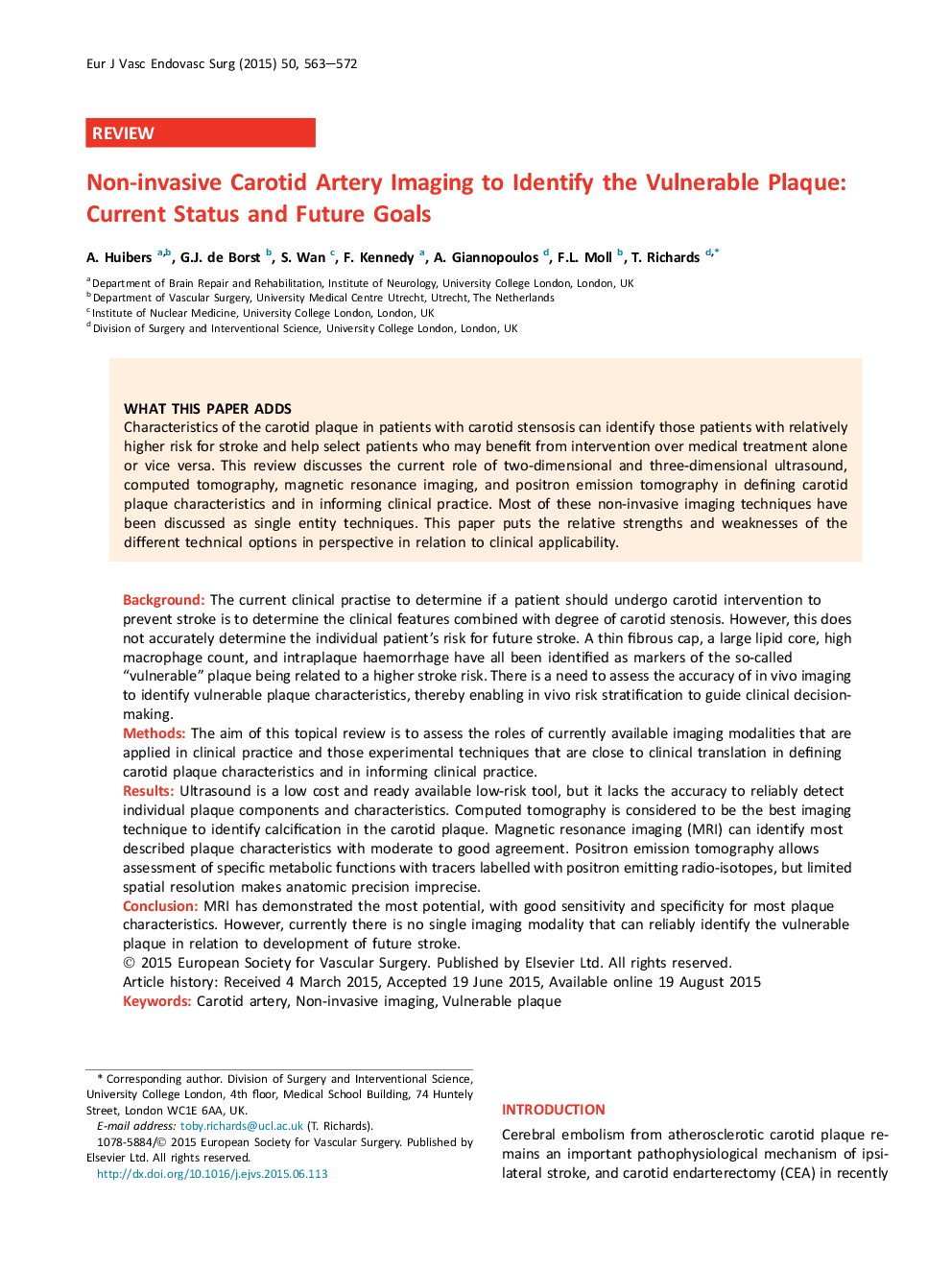| Article ID | Journal | Published Year | Pages | File Type |
|---|---|---|---|---|
| 2911786 | European Journal of Vascular and Endovascular Surgery | 2015 | 10 Pages |
BackgroundThe current clinical practise to determine if a patient should undergo carotid intervention to prevent stroke is to determine the clinical features combined with degree of carotid stenosis. However, this does not accurately determine the individual patient's risk for future stroke. A thin fibrous cap, a large lipid core, high macrophage count, and intraplaque haemorrhage have all been identified as markers of the so-called “vulnerable” plaque being related to a higher stroke risk. There is a need to assess the accuracy of in vivo imaging to identify vulnerable plaque characteristics, thereby enabling in vivo risk stratification to guide clinical decision-making.MethodsThe aim of this topical review is to assess the roles of currently available imaging modalities that are applied in clinical practice and those experimental techniques that are close to clinical translation in defining carotid plaque characteristics and in informing clinical practice.ResultsUltrasound is a low cost and ready available low-risk tool, but it lacks the accuracy to reliably detect individual plaque components and characteristics. Computed tomography is considered to be the best imaging technique to identify calcification in the carotid plaque. Magnetic resonance imaging (MRI) can identify most described plaque characteristics with moderate to good agreement. Positron emission tomography allows assessment of specific metabolic functions with tracers labelled with positron emitting radio-isotopes, but limited spatial resolution makes anatomic precision imprecise.ConclusionMRI has demonstrated the most potential, with good sensitivity and specificity for most plaque characteristics. However, currently there is no single imaging modality that can reliably identify the vulnerable plaque in relation to development of future stroke.
